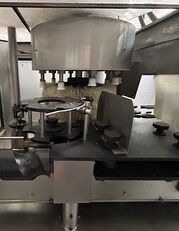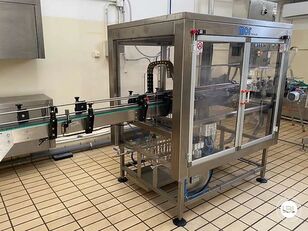Myjka do butelek KLINGER 20/1/73












Jeśli zdecydowałeś się na zakup pojazdu w niskiej cenie, upewnij się że konwersujesz z prawdziwym dealerem. Dowiedz się czegoś więcej o właścicielu pojazdu. Jeden ze sposobów oszustwa – podać się za realnie istniejącą firmę. Gdy podejrzewasz oszustwo, zgłaszaj je w formularzu kontaktowym dla przeprowadzenia dodatkowej kontroli.
Zanim dokonasz zakupu, uważnie zapoznaj się z kilkoma ofertami sprzedaży, aby poznać średnią wartość wybranego modelu. Jeśli cena wybranej przez Ciebie oferty jest znacznie niższa od analogicznych ogłoszeń, warto się zastanowić. Znacząca różnica w cenie może świadczyć o ukrytych defektach lub o próbie oszustwa przez sprzedającego.
Nie kupuj pojazdu, którego cena znacznie różni się od średniej ceny za analogiczny sprzęt.
Nie zgadzaj się na płacenie zadatku za towar. W razie wątpliwości nie bój się pytać o szczegóły dotyczące ogłoszenia, poprosić o dodatkowe zdjęcia i dokumenty pojazdu. Sprawdzaj ich poprawność i zadawaj dodatkowe pytania.
Najbardziej rozpowszechniony typ oszustwa. Nieuczciwi sprzedawcy mogą prosić o wpłatę zadatku dla "rezerwacji" twojego prawa na zakup pojazdu. W ten sposób oszuści gromadzą duże kwoty i znikają, przestają odbierać telefon.
- Transfer zadatku na kartę
- Nie wpłacaj zadatku bez dokumentów, które miały by potwierdzić przekazanie środków, jeśli podczas współpracy sprzedający wzbudza podejrzenia.
- Transfer na konto "zaufanej osoby"
- Podobna prośba powinna wzbudzić podejrzenia, prawdopodobnie konwersujesz z oszustem.
- Transfer na konto firmy o podobnej nazwie
- Bądź czujny, oszuści mogą maskować się pod znane firmy, wprowadzając nieznaczne zmiany do nazwy. Nie przesyłaj środków jeśli nazwa firmy wzbudza podejrzenia.
- Podstawienie własnych danych do przelewu w fakturze realnej firmy
- Zanim zrealizujesz płatność, upewnij się o prawdziwości podanych danych do przelewu i czy na pewno należą do tej firmy.
Kontakt do sprzedającego



 Włochy
Włochy 



















































Used Bottle Washer KLINGER up to 9600 bph
This Bottle Washer handles up to 9,600 bottles per hour. The machine features 20 bottles per row, ensuring a long soaking time and double lye pumps. Constructed entirely of stainless steel, this bottle washer uses a Siemens S7 control system, ensuring reliable and precise operation.
Technical Specifications of the Washing System
The Used Bottle Washer KLINGER up to 9600 bph includes double heaters and overflow pumps, providing a high cleaning capacity. Consequently, this configuration treats each bottle uniformly, enhancing the efficiency of the washing process. The Siemens S7 control system, furthermore, offers a user-friendly interface via a touch panel, simplifying operational management.
Potable Water Treatment Plant
Potable water treatment plays a crucial role in the proper functioning of the bottle washer. Hager + Elsässer provides the plant, which includes cation and anion exchangers, a salt container, a pre-filter, and a UV probe. This system processes 5 m³/h, ensuring high-quality water. Additionally, the reverse osmosis (RO) plant delivers a total desalination capacity of 2.5 m³/h, ensuring pure water for the washing process.
Electrical Configuration and Control Panels
This Bottle Washer features three electrical panels, arranged from left to right, with a Siemens touch panel for centralized control. This configuration allows for accurate monitoring and optimal operational management. In addition, the upper panels handle cooling, with a total residence time of 4.13 minutes and a treatment time of 1.63 minutes.
Technical details
Bottle cells: width and diameter:
height 100 mm. 360 mm spray hole in the base of the cell diameter 20 mm. The bottle cell is not round on the lower insertion side, but flattened , so that even bottles with small diameters can be inserted into the cell without any problems.
Bottles from 200 ml to 1,500 ml can be rinsed.
The diameter of the bottle mouth must not be smaller than the spray hole in the bottom of the cell, i.e. at least 20 mm.
If the bottles are very light, or made of PVC, the spray pressure of the pumps could be reduced using software, so that the bottles are not sprayed out of the cell.
Fort PVC bottles the diameter of the bottles should not be smaller than 50 mm, depending on the shape and weight. The higher the weight, the better…
PVC bottles do not cause problems because of their shape or diameter, but are usually too light…
So your bottles can be easily worked.
Treatment and Spraying Details of the Used Bottle Washer KLINGER up to 9600 bph
The central panel, on the other hand, manages the spraying times with the following specifications:
Spraying soda: 0.5 min.
Residual soda: 0.83 min.
Hot water: 0.38 min.
Warm water: 0.38 min.
Cold water: 0.38 min.
Fresh water: 0.25 min.
Cell Dimensions and Capacity of the Used Bottle Washer KLINGER up to 9600 bph
The internal dimensions of the cells are 350 mm x 100 mm, accommodating different bottle sizes. The machine allows bottle loading either hot or cold, with the ability to handle variable temperatures as needed, such as bottle discharge at 20°C or 70°C.
Preliminary Heating and Soda Treatment
Preliminary heating, likewise, has a total residence time of 3.125 minutes, with a treatment time of 1 minute. Soda treatment includes a total residence time of 6 minutes and a treatment time of 3.5 minutes, with a soda soak of 2.75 minutes. These parameters, as a result, ensure that the bottles are perfectly clean and ready for reuse.
In conclusion, this Bottle Washer provides a high-quality solution for bottle washing operations, ensuring efficiency and reliability through its advanced technical features and precise process control.
Speed: 9600 BPH
Containers: Glass
Electrical data: kw: 35kw
No. of Rows: 20
Heat Exchanger: Yes
Cleaning system: No
Cleaning type: Pulp
N° soda baths: 1
Bottle entry: Single
brand: KLINGER